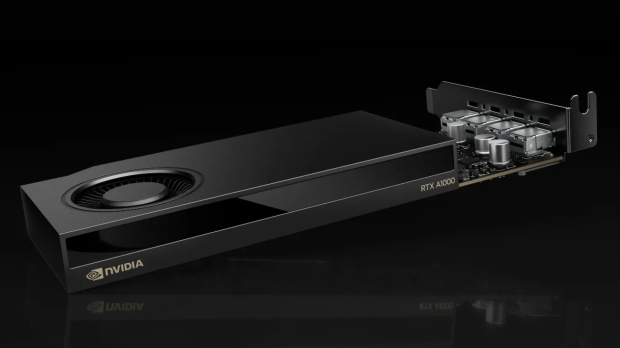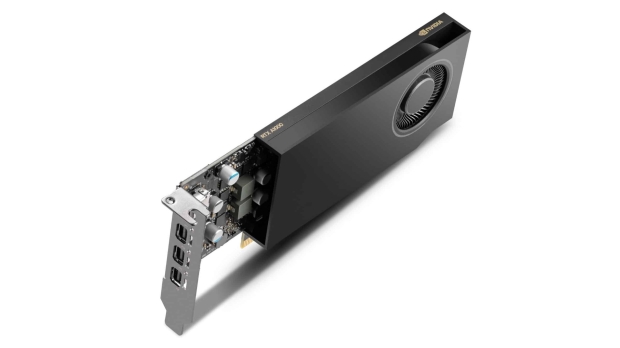NVIDIA has just introduced two new entry-level workstation Ampere-based GPUs, with the new RTX A400 and RTX A1000 cards, both in single-slot design.

The new NVIDIA RTX A1000 and RTX A400 workstation GPUs provide access to AI and ray tracing technologies, which are in the everyday workflows of professionals. The new NVIDIA RTX A1000 workstation GPU should have the GA106 GPU with 2304 CUDA cores, 72 Tensor Cores, and 18 RT Cores.
The RTX A1000 has up to 6.74 TFLOPS of FP32 compute performance, with 8GB of GDDR6 memory at 12Gbps speeds on a 128-bit memory bus that's capable of up to 192GB/sec of memory bandwidth. NVIDIA's new RTX A400 has 768 CUDA cores, 24 Tensor Cores, and 6 RT Cores. It'll feature up to 2.7 TFLOPS of FP32 compute performance, with 4GB of GDDR6 memory on a 64-bit memory bus with just 96GB/sec of memory bandwidth.
They won't be working on trillion-parameter scale generative AI, but the new entry-level workstation GPUs from NVIDIA do have some great wins in their favor: they're a single-slot, blower-style card with no external PCIe power connector. This is fantastic for low-power, quiet desktop PC builds that need just a bit of workstation GPU oomph.
The NVIDIA RTX A400 and A1000 GPUs are equipped with features designed to supercharge everyday workflows, including:
- Second-generation RT Cores: Real-time ray tracing, photorealistic, physically based rendering and visualization for all professional workflows, including architectural drafting, 3D design and content creation, where accurate lighting and shadow simulations can greatly enhance the quality of work.
- Third-generation Tensor Cores: Accelerates AI-augmented tools and applications such as generative AI, image rendering denoising and deep learning super sampling to improve image generation speed and quality.
- Ampere architecture-based CUDA cores: Up to 2x the single-precision floating point throughput of the previous generation for significant speedups in graphics and compute workloads.
- 4GB or 8GB of GPU memory: 4GB of GPU memory with the A400 GPU and 8GB with the A1000 GPU accommodate a range of professional needs, from basic graphic design and photo editing to more demanding 3D modeling with textures or high-resolution editing and data analyses. The GPUs also feature increased memory bandwidth over the previous generation for quicker data processing and smoother handling of larger datasets and scenes.
- Encode and decode engines: With seventh-generation encode (NVENC) and fifth-generation decode (NVDEC) engines, the GPUs offer efficient video processing to support high-resolution video editing, streaming and playback with ultra-low latency. Inclusion of AV1 decode enables higher efficiency and smoother playback of more video formats.



